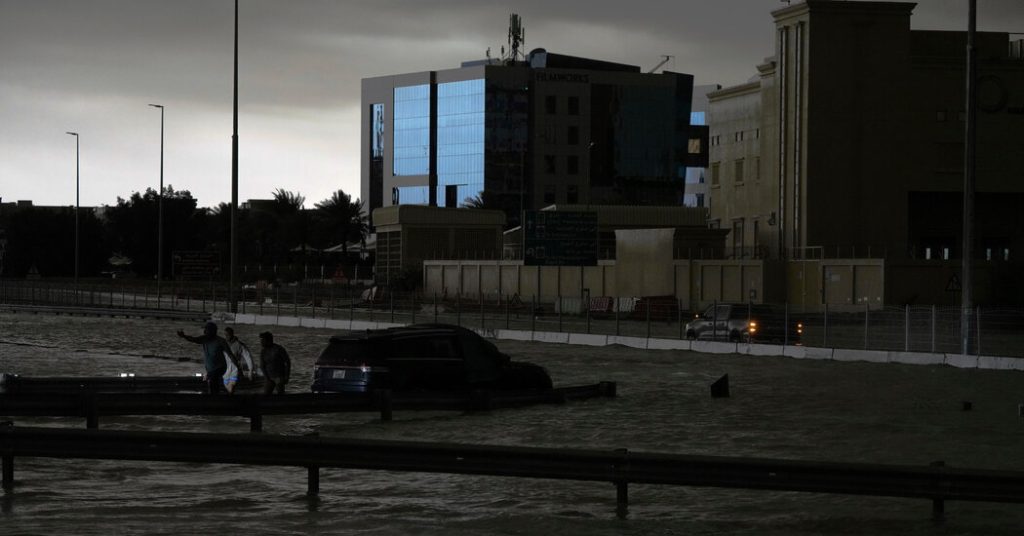Record levels of rainfall have caused chaos in the United Arab Emirates and Oman, with at least 19 people reported dead in Oman as a result of the extreme weather conditions. In the U.A.E., authorities have advised residents to stay indoors as videos circulating online show submerged cars on flooded highways and planes taxiing down flooded runways in Dubai. Experts attribute the unusually heavy rainfall to a regular weather system that has been intensified by climate change.
The storm hit Oman on Sunday, leading to widespread flash flooding and the closure of schools and government offices. By Wednesday, the heavy rains had subsided, but residents were warned to remain cautious. Some areas of Oman received over 9 inches of rain in just a few days, far exceeding the annual average rainfall in the region. The death toll in Oman includes an infant and ten schoolchildren who were swept away in a vehicle by floodwaters. Some schools remained closed and government employees were advised to work from home.
Meanwhile, the U.A.E. experienced its largest rainfall event in 75 years, with one area receiving over 10 inches of rain in less than a day. Dubai International Airport, one of the world’s busiest airports, faced delays and diversions of flights due to the extreme weather. Despite speculation about cloud seeding efforts contributing to the heavy rainfall, experts dismiss this claim, asserting that the intensified weather is more likely a result of rising air and sea temperatures increasing moisture in the atmosphere.
According to experts, the extreme weather in Oman and the U.A.E. is the result of a relatively normal weather system that has been amplified by ocean and atmospheric warming. A low pressure system moving over the Arabian Peninsula and the Gulf of Oman, combined with interactions with the jet stream, produced unusually heavy rainfall. Rising temperatures have led to increased ocean evaporation, resulting in more moisture in the atmosphere and contributing to the intensity of the rainfall events.
Janette Lindesay, a climate scientist at the Australian National University, notes that global heating likely played a role in the severity of the recent weather event. She explains that while there may be fewer days with moderate rainfall, the days with heavier rainfall are more intense. With climate change continuing to impact weather patterns globally, it is crucial for countries to implement measures to mitigate and adapt to these extreme weather events. The recent heavy rainfall in Oman and the U.A.E. serves as a stark reminder of the urgent need to address climate change and its impacts on vulnerable regions.















